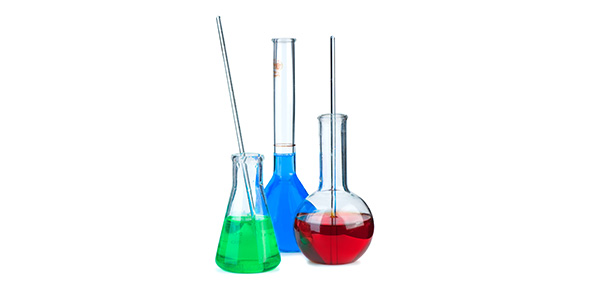Related Flashcards
Related Topics
Cards In This Set
| Front | Back |
|
In microbiology lab, you make three different culture plates: one general purpose plate, one selective media plate, and one differential media plate. Unfortunately, you forget to label the different plates, so you do not know which is which. To determine the identity of each plate, you inoculate it with two different strains of laboratory bacteria. Which of the following results would indicate the plate you used was the general purpose media?
Both organisms would grow equally well. Both organisms would grow, but they would be dyed different colors. Only one organism would grow. Only one organism would grow, and it would grow a different color. |
Both organisms would grow equally well.
|
|
In microbiology lab, you make three different culture plates: one general purpose plate, one selective media plate, and one differential media plate. Unfortunately, you forget to label the different plates, so you do not know which is which. To determine the identity of each plate, you inoculate it with two different strains of laboratory bacteria. After inoculation, you see that a particular plate has allowed both organisms to grow, but one has changed color. Which plate do you think this is?
It is impossible to distinguish between selective and differential media in this case.
selective media
differential media
general purpose media
|
Enrichment media
|
|
Which of the following would you expect to be a function of MacConkey agar? Mark all that apply.
allow for the growth of all organisms in a sample regardless of nutritional requirements inhibit the growth of certain bacteria allow for the growth of all organisms in a sample that require only the most common nutrients change the color of some organisms based on their metabolic characteristics |
change the color of some organisms based on their metabolic characteristics inhibit the growth of certain bacteria
|
|
What enables the copied chromosomes to separate during binary fission?
The chromosomes are attached to different parts of cell membrane, which elongates and thus separates the chromosomes.
The septum splits the replicated chromosomes.
The mitotic spindle drives the separation.
The nuclear membrane dissolves.
|
The chromosomes are attached to different parts of cell membrane, which elongates and thus separates the chromosomes.
|
|
How long does it take for the daughter cells from one round of replication to replicate themselves?
No time is required -- they are ready to divide immediately after DNA replication and separation of the daughter cells is complete if conditions are right.
20 minutes
No time is needed -- the daughter cells cannot replicate further.
After the cells have matured fully.
|
No time is required -- they are ready to divide immediately after DNA replication and separation of the daughter cells is complete if conditions are right.
|
|
Put the following steps of bacterial replication in the correct order, starting from a parent cell.
|
3, 1, 2, 4
|
|
What would happen if the septum did not form during binary fission?
The daughter cells would not be genetically identical.
Nothing; the septum is not required for binary fission.
The chromosome could not replicate.
The parent cell would now have two copies of the chromosome.
|
The parent cell would now have two copies of the chromosome.
|
|
Starting with three cells, how many cells would result from three rounds of replication?
Six
Nine
Twelve
Twenty-four
Forty-eight
Cannot be determined
|
Twenty-four
|
|
What results when a single bacterium reproduces?
Two genetically unique daughter cells
One parent cell and a genetically identical daughter cell
One parent cell and a genetically different cell
Two genetically identical daughter cells
|
Two genetically identical daughter cells
|
|
If you begin with six cells, how many cells would you have after three rounds of division?
Twelve cells
Nine cells
Eighteen cells
Twenty-four cells
Forty-eight cells
It is impossible to determine.
|
Forty-eight cells
|
|
Which of the following is NOT a step in bacterial cell division?
Cell elongation
Disappearance of nuclear envelope
Replication of the genetic material
Splitting apart of two new daughter cells
|
Disappearance of nuclear envelope
|
|
Which step of binary fission is the reason for genetically identical daughter cells?
Replication of the bacterial chromosome
Splitting of the two daughter cells
There are four new daughter cells that result from one parental cell
Elongation of the cell
|
Replication of the bacterial chromosome
|
|
The Lake of the Ozarks is a human-made lake, so it collects runoff from coal strip-mining, fertilizers, resort wastewaters, and septic drainages. The average lake temperature is between 10∘C and 21∘C. Consider the physical requirements for growth and multiplication that would allow fecal coliforms to “blossom” in the Lake of the Ozarks. Which of the following would accurately describe these organisms?
Check all that apply.
Mesophiles
Facultative halophiles
Hyperthermophiles
Psychrophiles
Extremophiles
|
Mesophiles
Facultative halophiles
|
|
In addition to physical requirements, bacterial growth and multiplication also entails chemical requirements. Which of the following statements would accurately describe chemical requirements and conditions associated with growth in the Lake of the Ozarks environment?
Select all of the following statements that are true regarding fecal coliforms in the Lake of the Ozarks.
Fecal coliforms will not need organic growth factors to grow in the lake environment.
The lake environment will support only the growth of obligate anaerobes.
The lake environment will support the growth of facultative anaerobes.
Fecal coliforms will need to acquire trace elements for growth in the lake environment.
Fecal coliforms will likely contain enzymes to counteract toxic oxygen forms.
|
The lake environment will support the growth of facultative anaerobes.
Fecal coliforms will need to acquire trace elements for growth in the lake environment.
Fecal coliforms will likely contain enzymes to counteract toxic oxygen forms.
|
|
Bacteria naturally prefer company instead of solitude for growth. Examples of this kind of communal growth pattern can be found everywhere, from surfaces of the teeth and the intestines, to the surface of a slimy rock in the lake, to the thick floc that clogs water pipes. These examples of communal bacterial growth are known by what name?
colony
biofilm
planktonic unit
infectious unit
|
Biofilm
|







